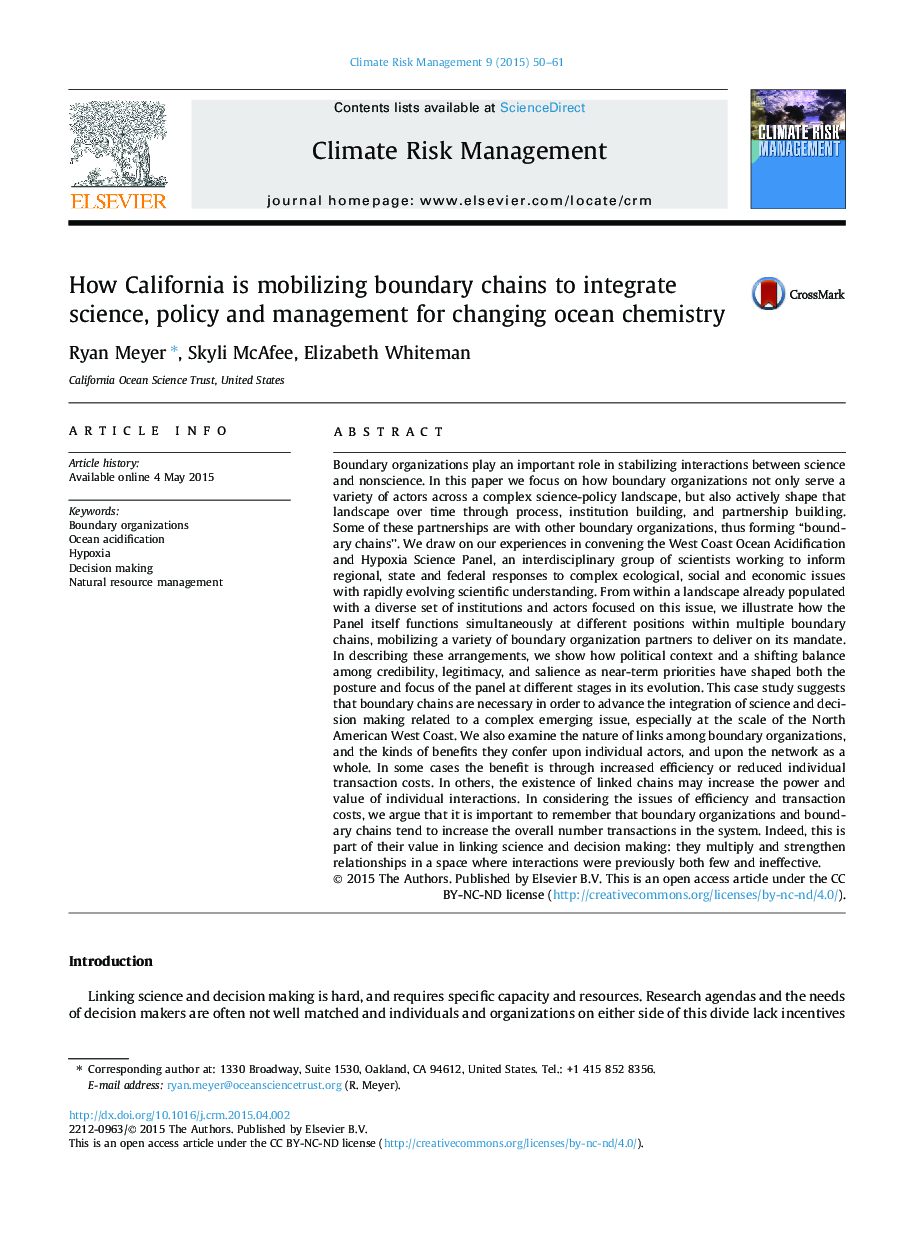| کد مقاله | کد نشریه | سال انتشار | مقاله انگلیسی | نسخه تمام متن |
|---|---|---|---|---|
| 1051255 | 1484883 | 2015 | 12 صفحه PDF | دانلود رایگان |
• We examine the “boundary chains” approach to linking science with decision-making.
• Boundary organizations can work together for improved impact and/or efficiency.
• They may reduce individual transaction costs, but increase total transactions.
• They create valuable links where interactions were both few and ineffective.
• The West Coast Ocean Acidification and Hypoxia Science Panel provides a case study.
Boundary organizations play an important role in stabilizing interactions between science and nonscience. In this paper we focus on how boundary organizations not only serve a variety of actors across a complex science-policy landscape, but also actively shape that landscape over time through process, institution building, and partnership building. Some of these partnerships are with other boundary organizations, thus forming “boundary chains”. We draw on our experiences in convening the West Coast Ocean Acidification and Hypoxia Science Panel, an interdisciplinary group of scientists working to inform regional, state and federal responses to complex ecological, social and economic issues with rapidly evolving scientific understanding. From within a landscape already populated with a diverse set of institutions and actors focused on this issue, we illustrate how the Panel itself functions simultaneously at different positions within multiple boundary chains, mobilizing a variety of boundary organization partners to deliver on its mandate. In describing these arrangements, we show how political context and a shifting balance among credibility, legitimacy, and salience as near-term priorities have shaped both the posture and focus of the panel at different stages in its evolution. This case study suggests that boundary chains are necessary in order to advance the integration of science and decision making related to a complex emerging issue, especially at the scale of the North American West Coast. We also examine the nature of links among boundary organizations, and the kinds of benefits they confer upon individual actors, and upon the network as a whole. In some cases the benefit is through increased efficiency or reduced individual transaction costs. In others, the existence of linked chains may increase the power and value of individual interactions. In considering the issues of efficiency and transaction costs, we argue that it is important to remember that boundary organizations and boundary chains tend to increase the overall number transactions in the system. Indeed, this is part of their value in linking science and decision making: they multiply and strengthen relationships in a space where interactions were previously both few and ineffective.
Journal: Climate Risk Management - Volume 9, 2015, Pages 50–61
